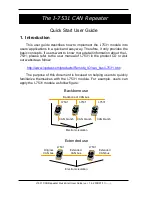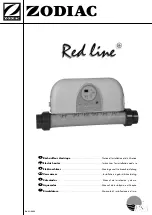
Fire Blazing Out Of
Control.
Check that:
a) the doors are tightly closed,
b) the thermostat knob is turned
down to the minimum setting,
c) the air inlet damper is closed (at
the bottom left of the appliance), and
that it is not prevented from closing
completely by a piece of ash,
d) a suitable fuel is being used,
e) the door seals are in good
condition.
Over-Firing
If the fire is over-fired it will cause
premature failure of the internal fire
parts. Overfiring is occurring when
any internal parts of the fire begin to
glow red. To prevent over-firing
ensure that:
a) the door seals are kept in good
condition, and that the doors are
sealing correctly,
b) the thermostat on the fire is
working correctly,
c) a suitable fuel is being used.
Fume Emission.
Warning Note: Properly installed and
operated this appliance will not emit
fumes. Occasional fume from
de-ashing and re-fuelling may occur.
Persistent fume emission is
potentially dangerous and must not
be tolerated. If fume emission does
persist then the following immediate
actions should be taken:
A) Open doors and windows to
ventilate the room.
B) Let the fire out and safely dispose
of fuel from the appliance.
C) Check for flue or chimney
blockage, and clean if required.
D) Do not attempt to relight fire until
cause of fume has been identified, if
necessary seek professional advice.
The most common cause of fume
emission is flueway or chimney
blockage. For your own safety these
must be kept clean.
Door Glass Blacks Up
Keeping the glass clean requires a
certain amount of experimentation
due to the differences in the draw of
different chimneys. The following
points should be noted and with a
little care should enable the glass to
be kept clean in most situations:
a) The airwash relies on a supply of
heated air to keep the glass clean,
therefore, when lighting the stove
allow the firebed to become well
established before turning the
thermostat down. This may also be
necessary when re-fuelling the stove.
b) When re-fuelling keep the fuel as
far back from the front firebars as
possible, do not try to fit too much
fuel into the firebox.
c) Never completely close the airwash
control - as a guide it should be at
least a quarter open.
d) Wet wood or logs overhanging the
front firebars will cause the glass to
blacken.
It is always more difficult to keep the
glass clean when running the stove
very slowly for long periods. It is
important that the chimney draw is
sufficient, (when the chimney is
warm a draught reading of at least
0.10 inches water gauge should be
obtained), and that it is not affected
by down-draught.
Freezing
If a boiler is fitted do not light the
fire if there is any possibility that any
parts of the system may be frozen.
Chimney Fires.
If the chimney is thoroughly and
regularly swept, chimney fires should
not occur. However, if a chimney fire
does occur turn the control knob to
the minimum setting, and tightly
close the doors of the appliance. This
should cause the chimney fire to go
out in which case the control should
be kept at the minimum setting until
the fire in the appliance has gone out.
The chimney and flueways should
then be cleaned. If the chimney fire
does not go out when the above
action is taken then the fire brigade
should be called immediately.
After a chimney fire the chimney
should be carefully examined for any
damage. Expert advice should be
sought if necessary.
Page 6
HV 7/96





























